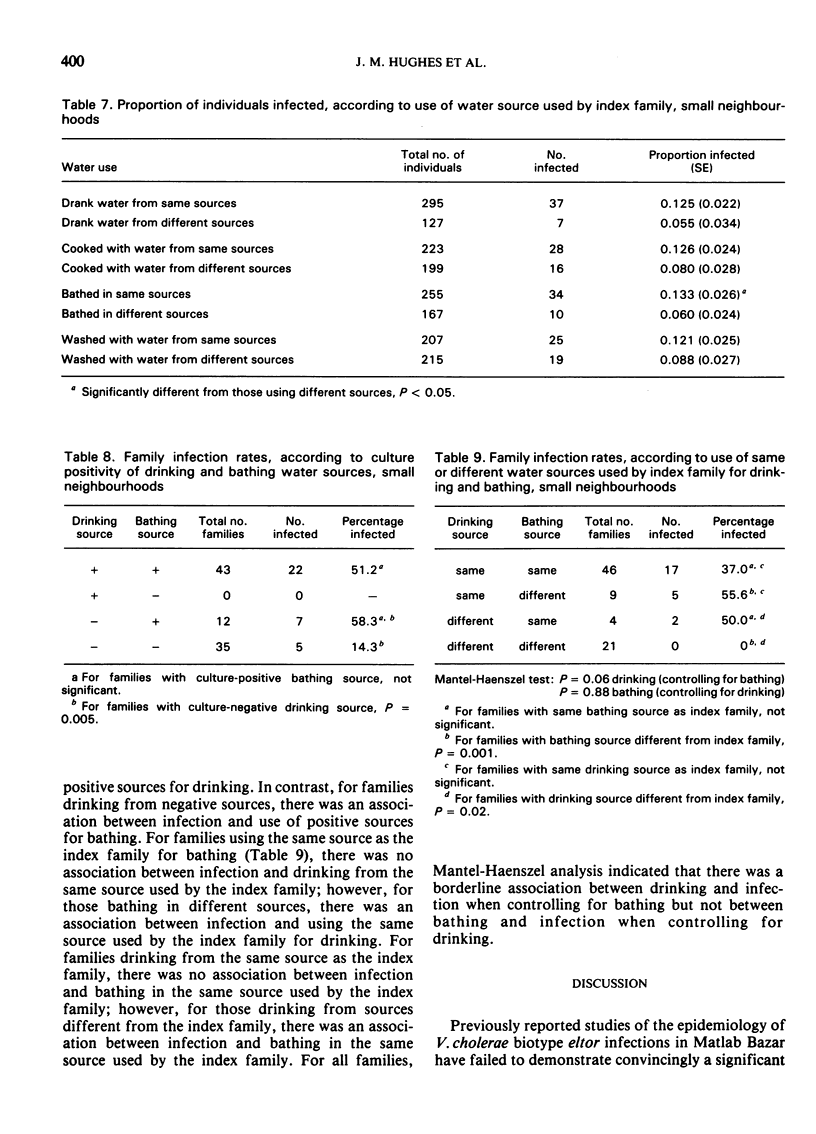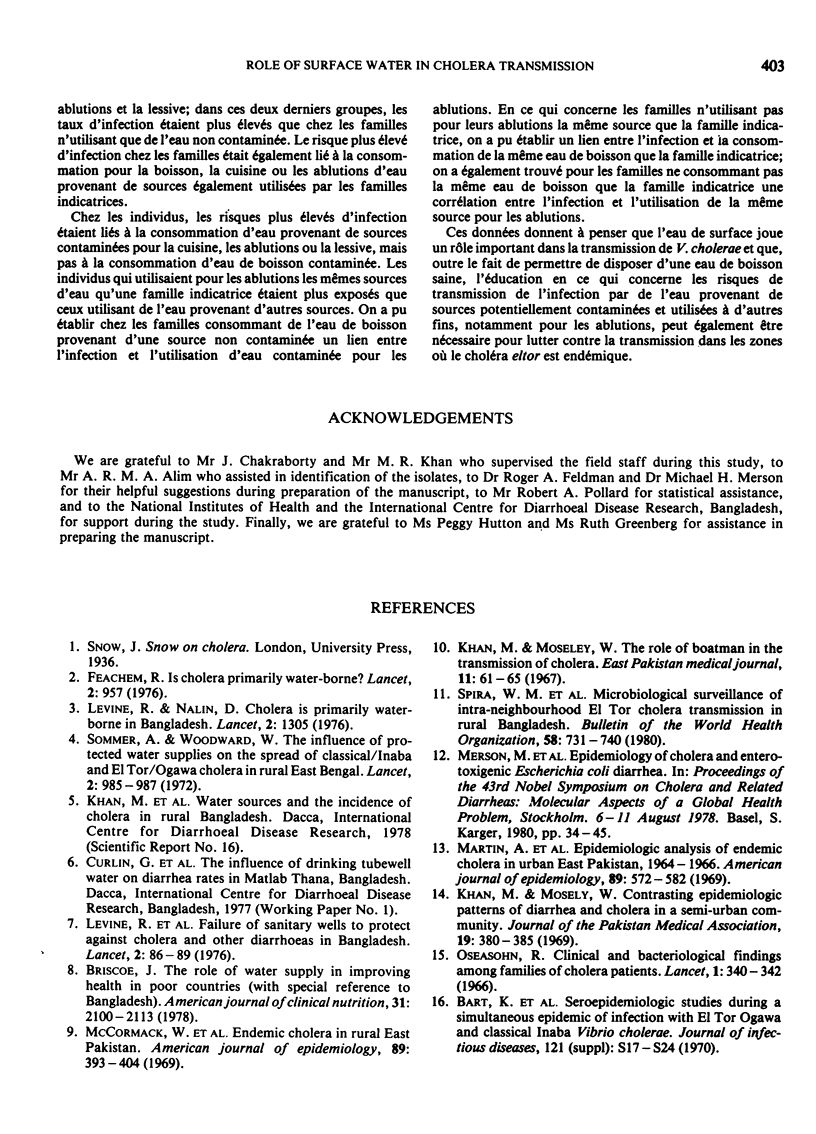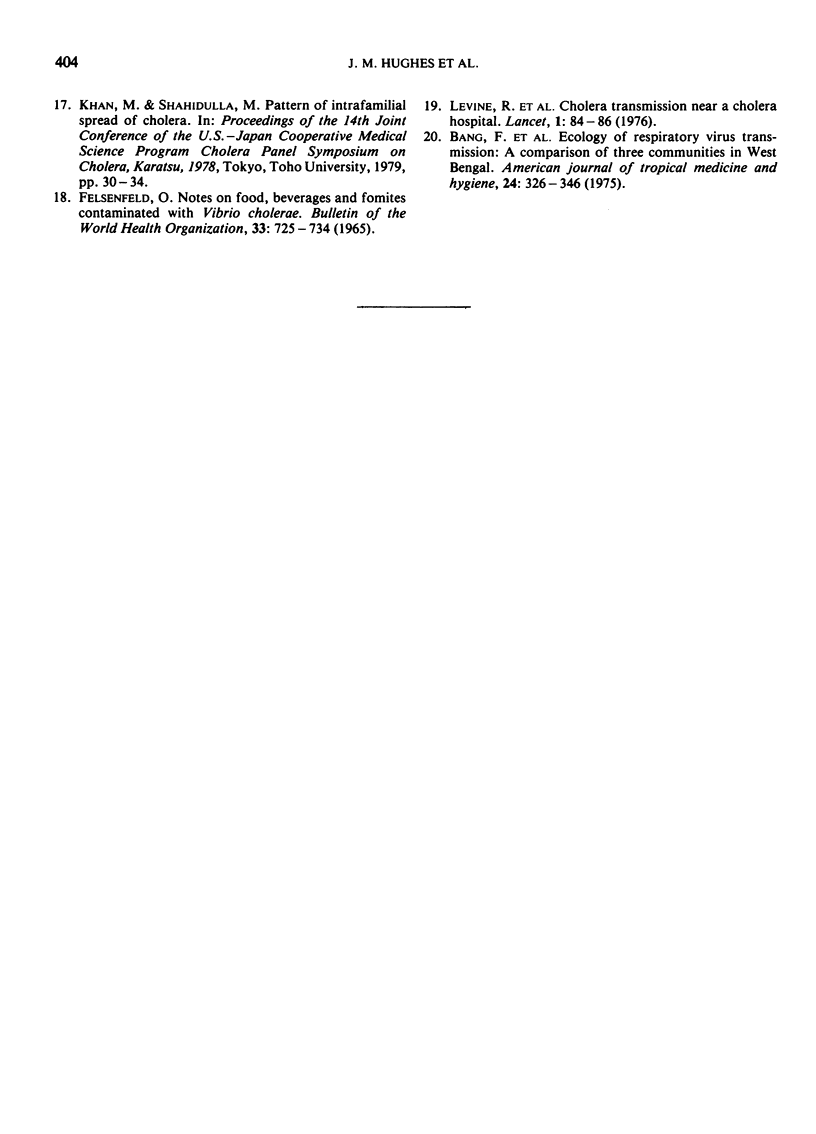Abstract
In order to define the role of water used for drinking, cooking, bathing, and washing in the transmission of Vibrio cholerae biotype eltor infections in an area with endemic cholera, surveillance was initiated in neighbourhoods with a culture-confirmed cholera index case and others with index cases with non-cholera diarrhoea as controls. In neighbourhoods with cholera infection, 44% of surface water sources were positive for V. cholerae, whereas only 2% of surface sources were positive in control neighbourhoods. Canals, rivers, and tanks were most frequently positive. There was an increased risk of infection for families using water from culture-positive sources for drinking, cooking, bathing, or washing and for those using water sources used by index families for drinking, cooking or bathing. Analysis of the results for individuals showed that in this case there was an increased risk of infection associated with using water from culture-positive sources for cooking, bathing, or washing, but not with using water from culture-positive sources for drinking. Individuals who used the same water source as an index family for bathing were more likely to be infected than those using different sources. For families drinking from a culture-negative source, there was an association between infection and bathing in a positive source. For families using a different bathing source from the index family there was an association between infection and drinking from the same source as the index family, and for families using a different drinking source from the index family there was an association between infection and bathing in the same source as the index family. These data suggest that use of surface water is important in the transmission of V. cholerae and that, in addition to providing safe drinking water, education regarding the risk of transmission of infection by water from potentially contaminated sources used for other purposes, especially bathing, may also be necessary to control transmission in areas where eltor cholera is endemic.
Full text
PDF









Selected References
These references are in PubMed. This may not be the complete list of references from this article.
- Bang F. B., Bang M. G., Bang B. G. Ecology of respiratory virus transmission: a comparison of three communities in West Bengal. Am J Trop Med Hyg. 1975 Mar;24(2):326–346. doi: 10.4269/ajtmh.1975.24.326. [DOI] [PubMed] [Google Scholar]
- Briscoe J. The role of water supply in improving health in poor countries (with special reference to Bangla Desh). Am J Clin Nutr. 1978 Nov;31(11):2100–2113. doi: 10.1093/ajcn/31.11.2100. [DOI] [PubMed] [Google Scholar]
- Feachem R. Is cholera primarily water-borne. Lancet. 1976 Oct 30;2(7992):957–958. doi: 10.1016/s0140-6736(76)90914-4. [DOI] [PubMed] [Google Scholar]
- Felsenfeld O. Notes on food, beverages and fomites contaminated with Vibrio cholerae. Bull World Health Organ. 1965;33(5):725–734. [PMC free article] [PubMed] [Google Scholar]
- Levine R. J., Khan M. R., D'Souza S., Nalin D. R. Failure of sanitary wells to protect against cholera and other diarrhoeas in Bangladesh. Lancet. 1976 Jul 10;2(7976):86–89. doi: 10.1016/s0140-6736(76)92299-6. [DOI] [PubMed] [Google Scholar]
- Levine R. J., Nalin D. R. Cholera is primarily waterborne in Bangladesh. Lancet. 1976 Dec 11;2(7998):1305–1305. doi: 10.1016/s0140-6736(76)92072-9. [DOI] [PubMed] [Google Scholar]
- Martin A. R., Mosley W. H., Sau B. B., Ahmed S., Huq I. Epidemiologic analysis of endemic cholera in urban East Pakistan, 1964-1966. Am J Epidemiol. 1969 May;89(5):572–582. doi: 10.1093/oxfordjournals.aje.a120970. [DOI] [PubMed] [Google Scholar]
- McCormack W. M., Mosley W. H., Fahimuddin M., Benenson A. S. Endemic cholera in rural East Pakistan. Am J Epidemiol. 1969 Apr;89(4):393–404. doi: 10.1093/oxfordjournals.aje.a120953. [DOI] [PubMed] [Google Scholar]
- Oseasohn R., Ahmad S., Islam M. A., Rahman A. S. Clinical and bacteriological findings among families of cholera patients. Lancet. 1966 Feb 12;1(7433):340–342. doi: 10.1016/s0140-6736(66)91322-5. [DOI] [PubMed] [Google Scholar]
- Sommer A., Woodward W. E. The influence of protected water supplies on the spread of classical-Inaba and El Tor-Ogawa cholera in rural East Bengal. Lancet. 1972 Nov 11;2(7785):985–987. doi: 10.1016/s0140-6736(72)92401-4. [DOI] [PubMed] [Google Scholar]
- Spira W. M., Khan M. U., Saeed Y. A., Sattar M. A. Microbiological surveillance of intra-neighbourhood E1 Tor cholera transmission in rural Bangladesh. Bull World Health Organ. 1980;58(5):731–740. [PMC free article] [PubMed] [Google Scholar]


